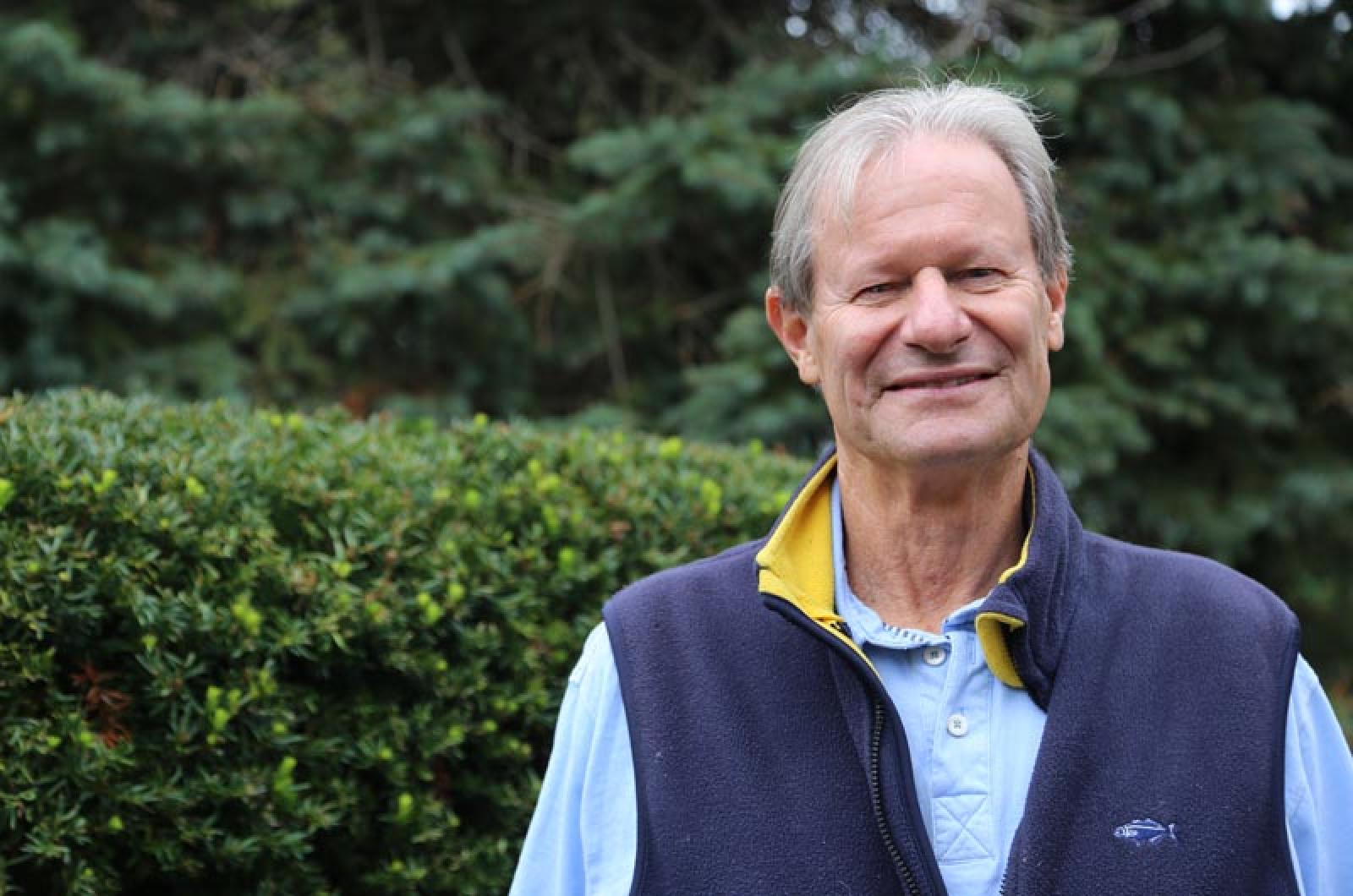Nearly 50 years after the assassination of President John F. Kennedy, numerous conspiracy theories still compete for attention. A recent study by the History Channel found that 85 per cent of Americans believe the assassination was the result of a plot against the president. Longtime Islander, historian and writer James Reston Jr. has developed his own argument in his new book to be released next month, The Accidental Victim: JFK, Lee Harvey Oswald, and The Real Target in Dallas.
Conspiracy theories imply that some organized body enlisted Mr. Oswald to do their dirty work, but Mr. Reston says Mr. Oswald is an unlikely hired gun. “No formal government would ever rely on such a person,” he said in an interview with the Gazette, pointing to the extreme volatility of Mr. Oswald’s nature and lack of expertise as a sharpshooter.
Mr. Reston found the explanations of the Warren Commission, the presidential panel charged with investigating the assassination, unconvincing. According to a summary of the Warren Commission’s findings, the official opinion did not arrive at a “definitive determination of Oswald’s motives,” and instead pointed to a host of factors, including a “deep-rooted resentment of all authority” a “capacity for violence,” and an “urge to try to find a place in history.”
“It’s time for historians to stand up and say what are the facts here,” Mr. Reston said.
The accidental theory was first suggested by Mr. Oswald’s wife, Marina, and Texas Sen. Ralph Yarborough, but it is not a widely accepted one. As Mr. Reston explains, the notion that such a grand act may have had a comparatively petty motive is a tough sell to the American people.
“For the country to have lost its president in the greatest crime of the century, when the commander-in-chief might have been an incidental or accidental target, was an irony too grotesque to contemplate,” he writes.
Mr. Oswald did not hate JFK, Mr. Reston insists. In fact, there is evidence that he liked and even admired the president, as did his wife. But he did harbor a deep personal resentment towards then-Texas governor, John Connally, who was seated in front of Mr. Kennedy and was wounded during the assassination. Mr. Osward had appealed to the governor to reverse his dishonorable discharge from the Marine Corps, but was ignored in what Mr. Reston calls, “a classic bureaucratic brushoff,” that profoundly injured Mr. Oswald’s faith in authority.
Mr. Reston “sniffed out” a new angle on the assassination during his research for a biography of John Connally called The Lone Star, published in 1989. While writing that book he learned of Mr. Oswald’s letter to Mr. Connally, a plea to a fellow Texan to restore his honorable discharge. Mr. Oswald had served in the Marines for three years, but had left the ranks in order to seek Russian citizenship. When he returned to the United States, Mr. Oswald, a poor speller who only completed the ninth grade, had only his honorable discharge to prove his worth to employers. When this was taken away from him without a hearing, he was devastated. This anger, targeted at Mr. Connally, fueled the assassination, Mr. Reston argues, with the intended victim being the governor and not the president.
The second part of Mr. Reston’s theory relies on the five-second interval between gun shots fired, in which Mr. Kennedy remained upright, while Mr. Connally writhed in pain, ducking out of the line of fire. Mr. Kennedy suffered chronic back pain and wore a Scarlett O’Hara-style corset every day to maintain his youthful image. During the assassination, he was unable to react to the shots because the corset rendered his midsection immobile.
“My theory is that he was basically mummified,” by his corset and overlaying ACE bandages, Mr. Reston said. Mr. Oswald continued to fire not because he necessarily wished to murder the president, but due to a theory called the motor program, which suggests that once a gunman begins to shoot, he may have difficulty stopping. After the initial shot, Mr. Connally ducked out of the line of fire, and Mr. Kennedy remained his sole target, so he suffered the worst wounds.
“Once, in those terrible seconds, he began to execute his plan to murder, he could not distinguish between Connally and Kennedy; he could only keep firing,” Mr. Reston writes.
Mr. Reston visited the National Archives in Maryland to view the corset, an experience he documents in the final pages of the book.
Mr. Reston’s work on this book began a year ago when he was interviewed for a History Channel program that will air in November. His fascination with human motivation may have something to do with his career as a novelist, he said.
“It has always interested me how people go beyond complaint and anger to violence,” he said. “There had to be something deeply emotional and personal there.”
Mr. Reston also served three years in the military, and his own honorable discharge from the Army meant a great deal to him.
At the time of the assassination, Mr. Reston was working for then-Secretary of the Interior, Stewart Udall, a champion of conservation initiatives and national parks. Mr. Udall was away in Japan that November, so Mr. Reston, then 22, watched Walter Cronkite’s famous televised announcement in Mr. Udall’s office.
The Accidental Victim will be released officially on Sept. 9, just over two months before the 50th anniversary of the Nov. 22 assassination.
“It’s important to leave the 50th anniversary with the facts,” Mr. Reston said.
On Sept. 10, he will step “into the lion’s den,” with a reading in Dallas.
“Dallas, I am told, is still overwhelmed by guilt,” he said.






Comments (19)
Comments
Comment policy »